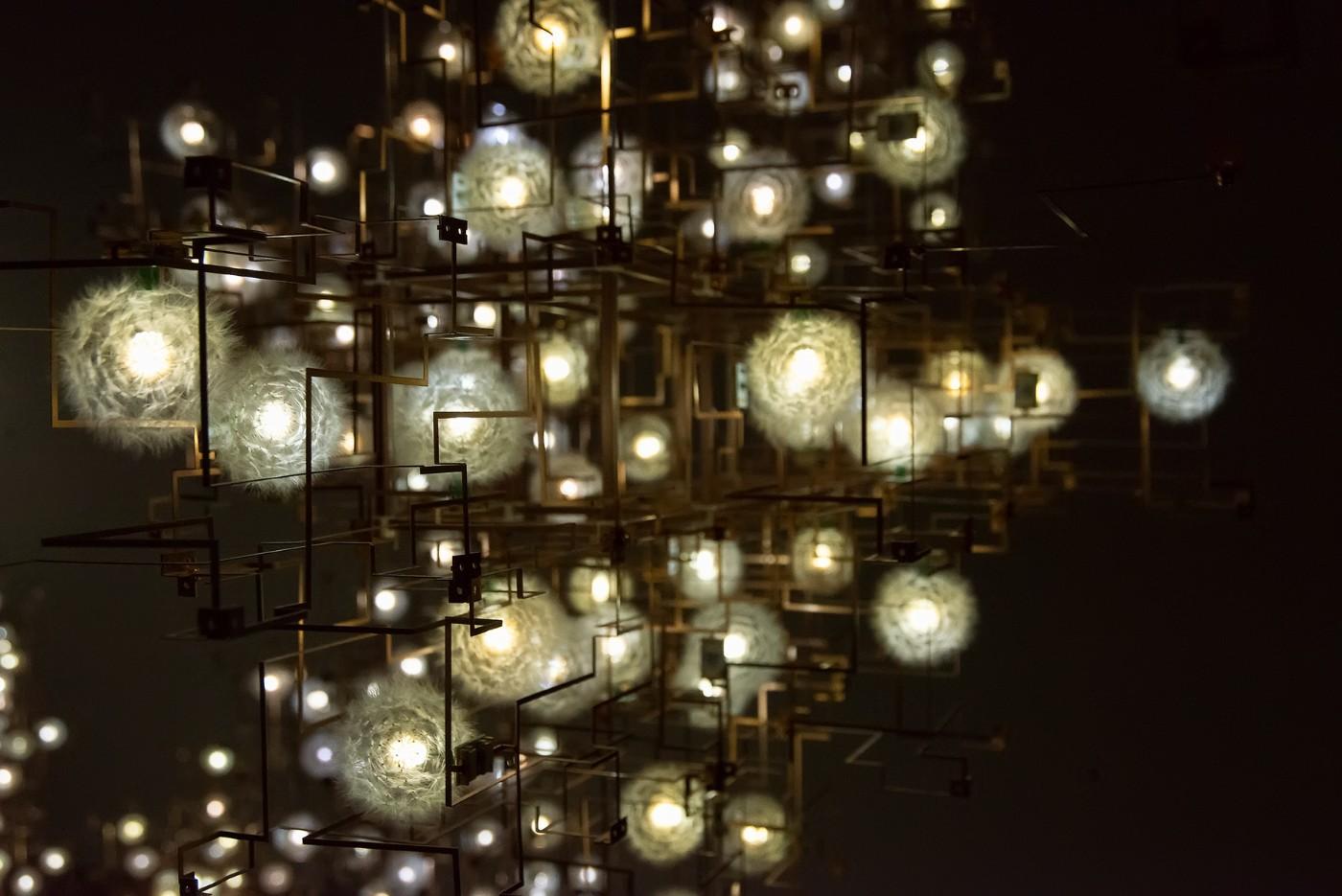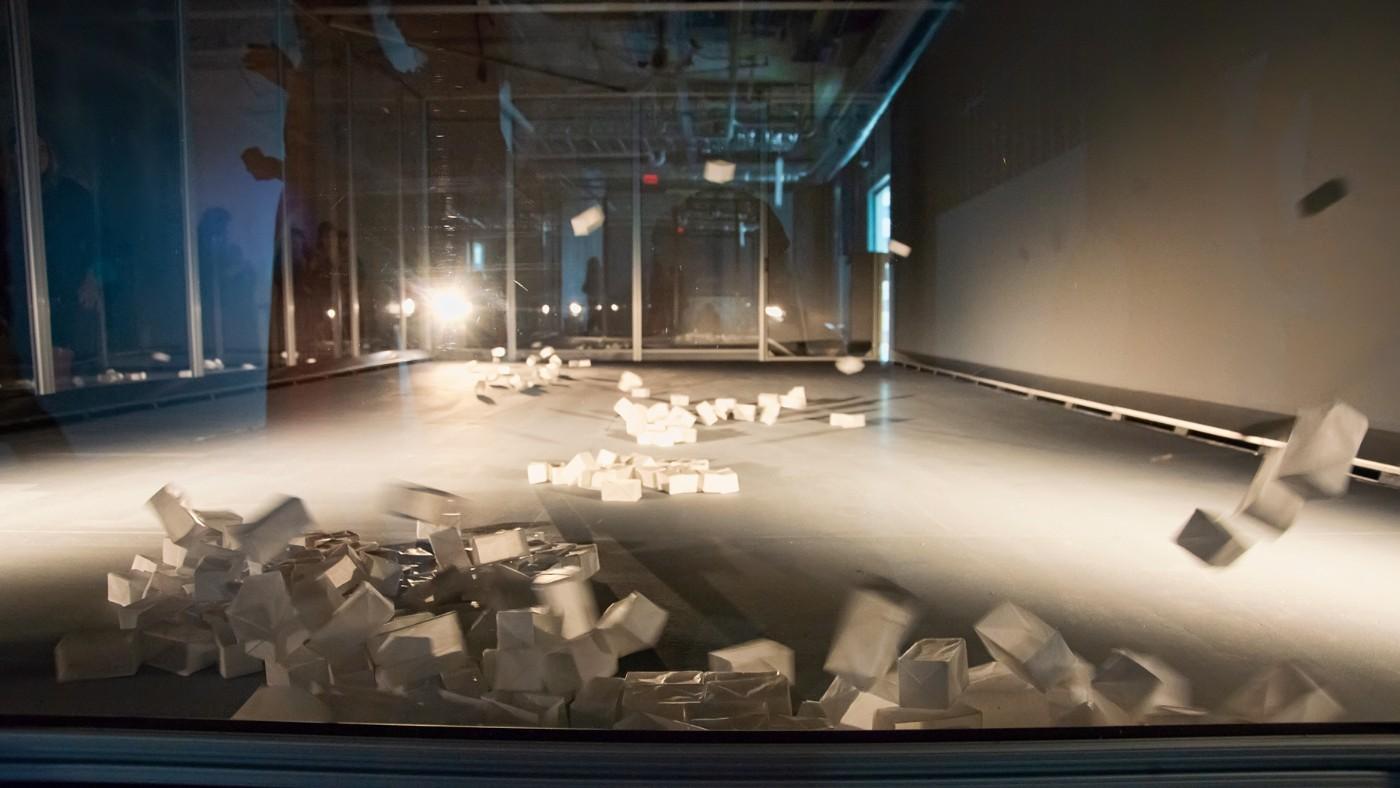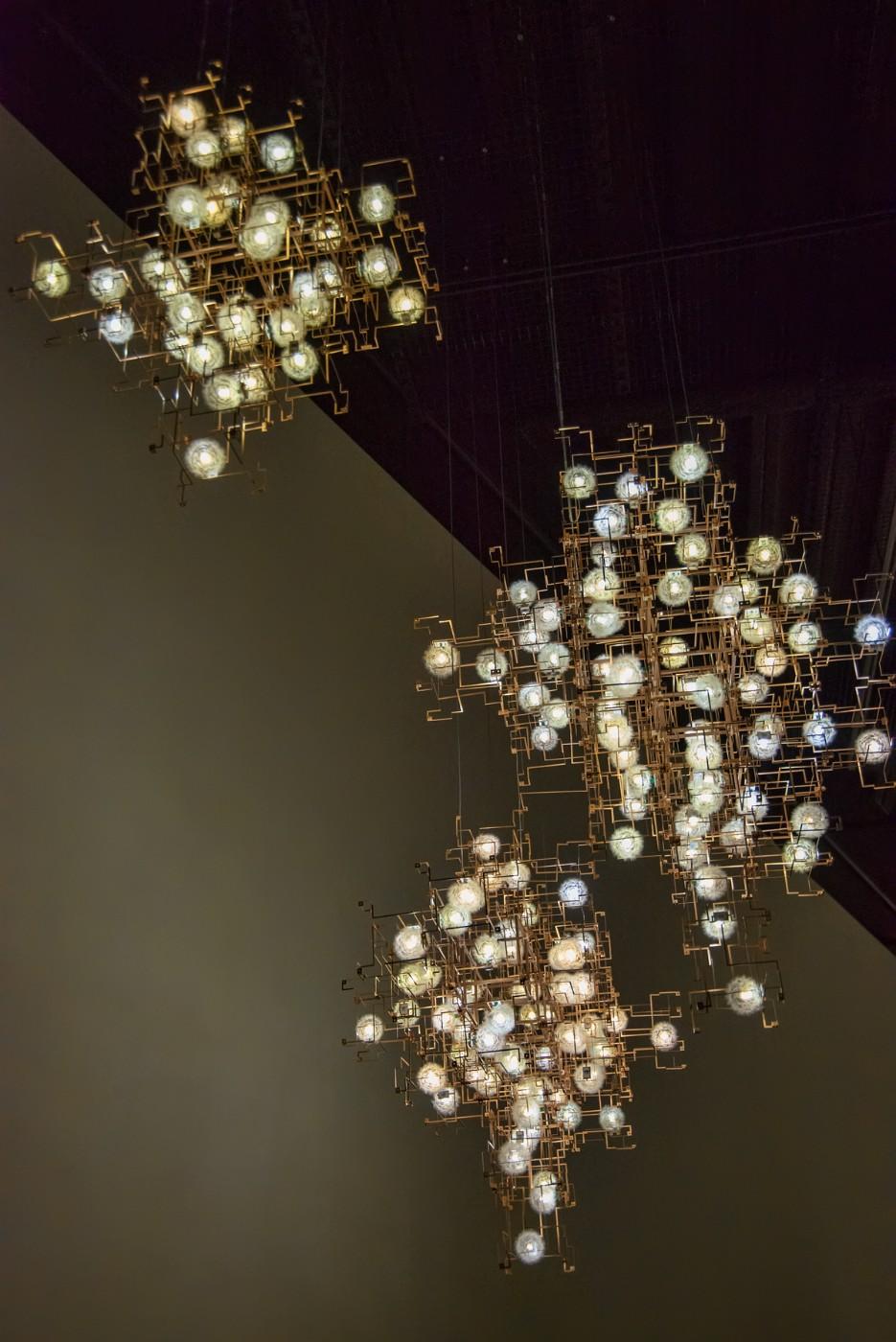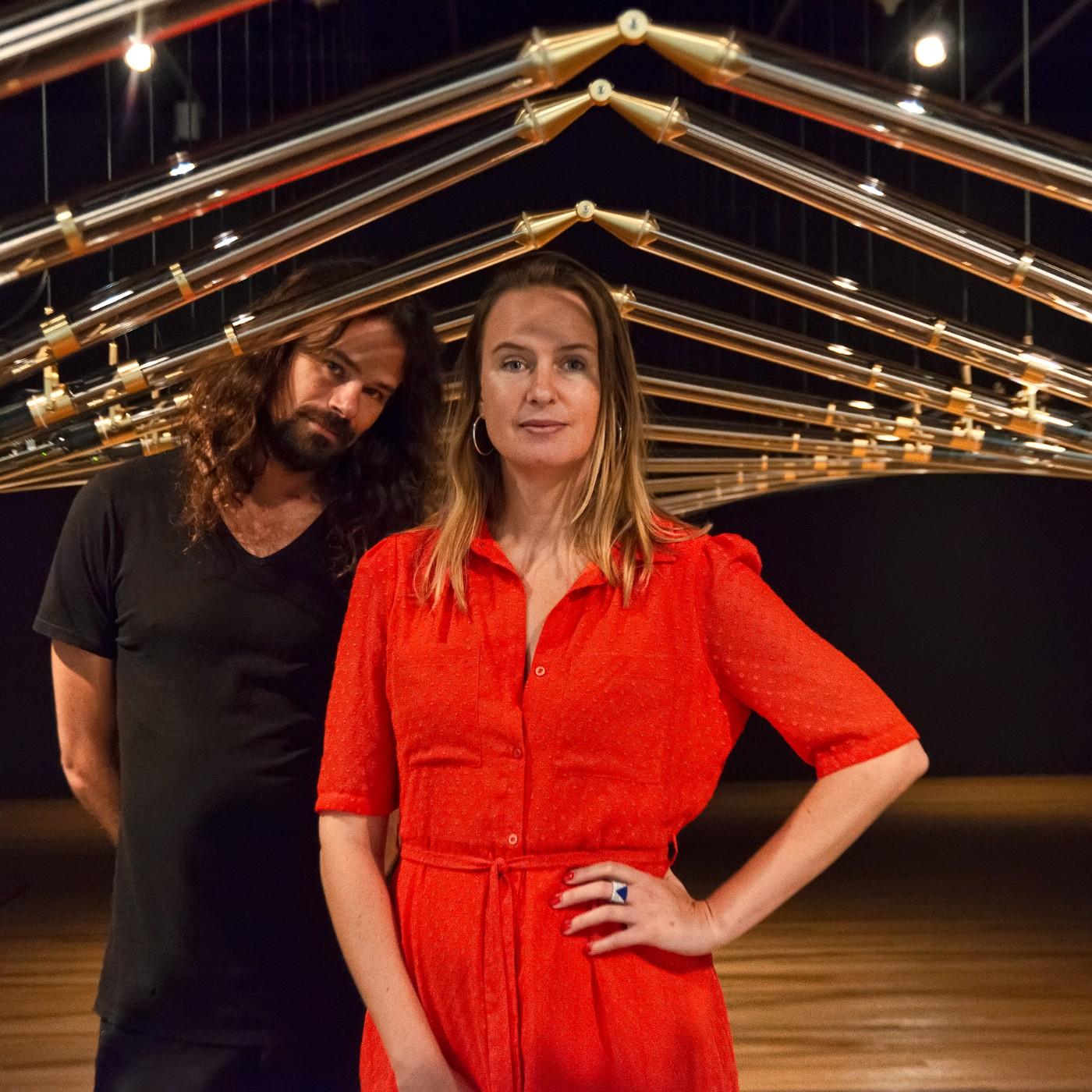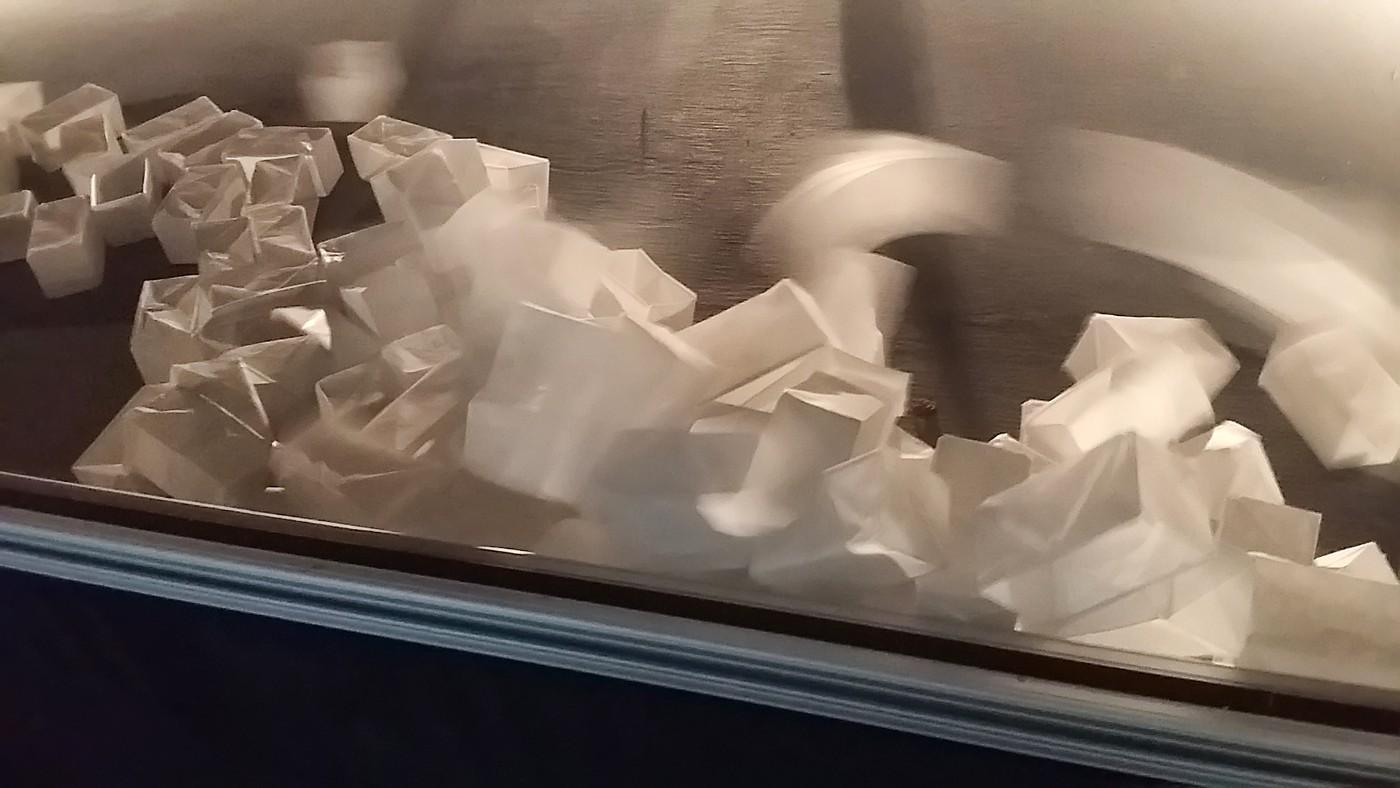Nauta and Gordijn will travel to the museum over the course of the show to develop their work-in-progress, Coded Coincidence, which premieres at the Mint. Ultimately, viewers will walk through a large chamber filled with wind blowers and small paper box shapes. For this evolving installation, the artists were inspired by swirling elm tree seeds that demonstrate what Gordijn calls “natural coincidence.”
After witnessing how the seeds fall and then pile up with no apparent destination, the artists noted how important environment is to the evolution of a species, as some of the seeds came to coincidental locations. Gordijn applies such natural coincidence to the human condition, noting that having new, unexpected experiences can encourage expansion. “We need those coincidences in our lives,” she adds. What Nauta and Gordijn see in nature, they see in themselves.




